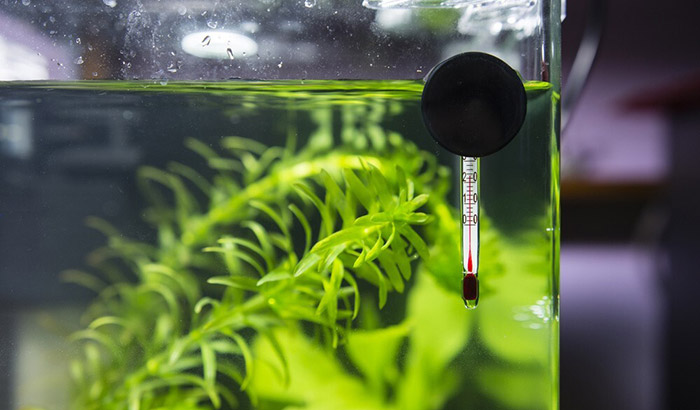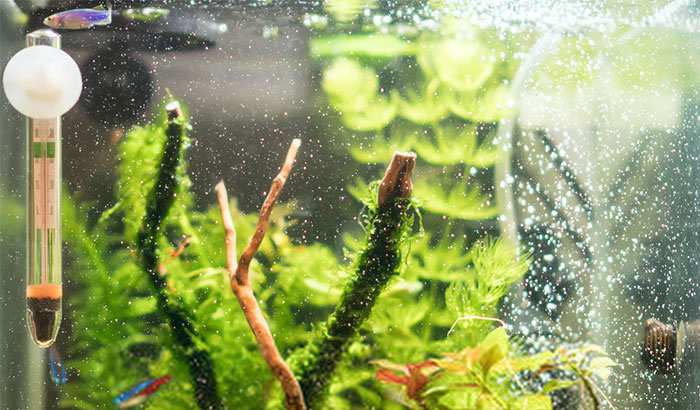Maintaining a fish tank is no easy job as there are so many factors that need to be considered. From giving the right amount of foods to keeping the right pH level of water, all of these things need to be done in the right way. Another important factor is having the right temperature on the fish tank, which should always be monitored using a fish tank thermometer.
But how to read a fish tank thermometer? There are many available options for fish tank thermometers, but the stick-on thermometer strips are the most popular with their affordability and easy usage feature. The only issue with this thermometer is it is tough to read and understand. But do not worry. This article will cover everything, including the installation and reading of the stick-on thermometer strips for the usage of your tank.
Contents
Reading and Installing a Fish Tank Thermometer
But before we proceed with teaching you how to read the fish tank thermometer, I will first explain to you the proper way to install the stick-on thermometer strips. You can position the temperature reader anywhere in the fish tank. From the front, back, or the side portion, as long as it will not cover the overall view of the aquarium, then it’s totally fine. Then, you need to clean the area where you intend to put the thermometer using a glass cleaner and wiping it with a clean cloth.
The next step is to peel off the adhesive attached to the thermometer and then position it to the targeted place before putting it into the glass. This action is to ensure the exact location of the thermometer strip. Once the strip is on the glass, press it against the glass surface to make sure that it is properly attached. My suggestion is to use an atm card to smoothen the surface and possibly eliminate some air bubbles formed in the sticker if there are any. After that, wait for at least half an hour, and you are good to go in using the fish tank thermometer.
Reading the Fish Thank Thermometer the Right Way
After the installation, the next step is knowing how to read the thermometer, which is more complicated than the installation. If you take a look at the thermometer strip, it comes with two readings. One side is Fahrenheit, and the other is celsius. However, when reading the thermometer, this fish tank tool is different from the usual thermometer in that we know where a red line is going up at the center.
These thermometers come in three different colors that indicate the temperature of the fish tank. But how to read it? Find out the pointers below:
- In reading the stick-on thermometer strips, there are three different colors that you will see in the reading: brown, green, and blue.
- There will be moments that it will be difficult to see the reading on the strip. You will use a torched and point it to the meter reading to see the different colors clearly.
- Here is what the different colors mean: brown means temperature rising, the green color is the actual temperature, the blue color means the temperature is falling.
- If all the colors appear during the actual reading, then the actual temperature is the reading in green color.
- If two colors as visible in the reading, then the number between the two numbers is the actual temperature. For example, the blue color is on 18 while the brown color is on 20, then the essential temperature reading is between the two numbers, which is 19.
- If the green and blue colors are visible on the temperature reading, it means that the actual temperature is on the green color, but the temperature is falling.
- Meanwhile, if green and brown colors are visible on the temperature reading, then the green color is the actual temperature reading, but the temperature is rising.
Reading this fish thank thermometer can be difficult, but once you are familiar with how to do it, it will be easy for you. Reading the temperature of your fish tank is essential to your fish, but unfortunately, this type of thermometer is not the most accurate thermometer out there. But, nevertheless, this is an excellent tool to use when you are just starting as an aquarium owner.
The Downside of Using Stick-On Thermometer Strips
The stick-on thermometer strips might be the most affordable aquarium thermometer, but the accuracy of this tool is suspect. Since they are located outside the fish tank, the temperature reading may not be accurate as compared to an in-tank thermometer. There is a tendency that the temperature reading of the thermometer strips might be affected by the room temperature, which can also affect its accuracy.
But, there are things that you can do to make the temperature reading as accurate as possible. One of which is to avoid the strip from getting exposed to the sunlight as it might influence its temperature reading. Another way is not to put the strip or the aquarium, for that matter, near to any temperature-related sources such as conditioner vent, swamp cooler, fireplace, and other similar places. These places can make the stip provide inaccurate temperature reading plus the fact that these places can also affect your fish.
However, one suggestion is to used a thermometer strip and combined it with an in-tank thermometer. Doing this action will provide accurate data and is far more reliable. If you feel that the strip is not providing accurate temperature reading, you can always recheck it with the in-tank thermometer.
Conclusion
Learning how to read a fish tank thermometer is essential because monitoring the water temperature is an integral part of the maintenance process of the aquarium. There are many thermometers available, but the most affordable option is the stick-on thermometer strips. However, this type of thermometer is difficult to read, which is why it is essential to learn how to read it correctly. This tool may not be the most accurate aquarium temperature reading tool, but it is an excellent start for you as you go along with your journey of owning an aquarium and taking care of the fish.


